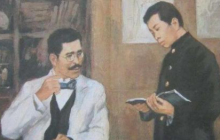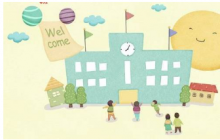【www.chinawenwang.com--教学课件】
下面是www.39394.com烟花美文网小编整理的unit 1 friendship writing教案,供大家参考!unit 1 friendship writing教案

Unit 1 Friendship
1.Teaching aims and demands
类别课程标准要求掌握的项目
话题Friends and friendship; interpersonal relationships
词汇add point upset ignore calm concern loose cheat reason list share feeling Netherlands German outdoors crazy nature purpose dare thunder entirely power according trust indoors suffer teenager advice questionnaire quiz situation editor communicate habit
add up calm down have got to be concerned about walk the dog go through hide away set down a series of on purpose
in order to face to face according to get along with fall in love
join in
功能态度(attitudes)
Are you afraid that---?
I’ve grown so crazy about---
I didn’t dare---
2. 同意和不同意(agreement and disagreement)
I agree. I think so. Exactly.
I don’t agree. I don’t think so. I’m afraid not.
3.肯定程度(certainty)
That’s correct. Of course not.
语法直接引语和间接引语(1): 陈述句和疑问句
陈述句
“I don’t want to set down a series of facts in a diary.” Said Anne.
-----Anne said that she didn’t want to set down a series of facts in a diary.
一般疑问句
He asked, “Are you leaving tonight?”
---He asked us whether we were leaving that night.
特殊疑问句
“When did you go to bed last night?” father said to Anne.
--- Father asked Anne when she went to bed the night before.
1. Suggested teaching notes
1). Analyses of the teaching contents
This unit is about friendship, and nearly all the teaching materials center on it.
Warming up---The questionnaire leads students to think and talk about
friendship, get to know the problems between friends
and seek solutions, which makes preparations for the
further teaching in topics, background and vocabulary.
Pre-reading---The questions prompt students to think critically about
friends and friendship in reality, alerting them to the fact
that besides people, a diary can be a friend, too.
Reading--- The diary by the Jewish girl Anne gave a glimpse of her life
during her family’s shelter in Amsterdam from the German
Nazis’ killing in world war 2. she treats the diary as her best friend, and in it reveals her longing for a normal life and close contact with nature, which helps her get through the days.
Comprehending---It helps students further understand the text by doing
multiple choices, questions and answers, and
matching.
Learning about language---It teaches the important expressions and
structures and grammar: direct and indirect
speeches.
Using language---The two letters, listening, questionnaire design, letter
writing and fun writing prepares students to further
talk about friendship, especially the problems with
misunderstanding, and unfriendliness, thus
strengthening students’ abilities to practice
language, discover, and solve problems.
Summing up---It summarizes the whole contents of this unit from the
aspects of topics, vocabulary and grammar.
Learning tip--- This part encourages students to form the habit of writing
a diary.
Integrating skills--- The text introduces the way Hawaiians express
friendship, to get students to realize the cultural
differences in the values of friendship in addition
its importance in all cultures.
2) Making of the teaching plan
This unit centers on friends and friendship, exploring different types of friendship
with particular attention to that one can develop with oneself, i.e., the comfort and
support one seeks from an imaginary friend. Students are expected to come to be truly
aware of the qualities and conducts that make a good friend, display and develop the
ability to cope with misunderstanding, conflicts and problems related to friendship,
and give advice on it. The concept that even an ordinary thing can be a friend should
break down the traditional belief in the interpersonal nature of friendship. Also, the
comparison of similarities dissimilarities in friendship comprehension between the
East and the West leads students to know better the values of friendship in Westerns’
eyes. All in all, this unit promises to unveil the true essence of friendship and helps
students to lead a more friendly and harmonious life. Thus, based on the theme,
contents and teaching objectives, the whole teaching procedures can fall into five
periods as follows:
Period 1Warming up and speaking
Period 2Reading
Period 3Grammar
Period 4Integrating skills (WB)
Period 5Using language
3. Teaching plans for each period
Period 1 Warming-up and Speaking
1. Teaching objectives:
1) Target language
I (don’t) think…… I (don’t) think so. I (don’t) agree.
I believe…… That’s correct. In my opinion, ……
2) Ability goals
a. Describe your friends in English
b. Figure out the problems between friends and then find different ways to solve the problems.
3) Learning ability goals
a. To encourage students to think and talk about friends and friendship by using some phrases and structures.
b. To learn to solve problems that may occur between friends.
c. To cultivate the students to form the good habit of learning English in Senior Middle School.
2. Teaching important points:
a. Use the given adjectives and sentence structures to describe one of your friends.
b. Learn to evaluate friends and friendship.
3. Teaching difficult points:
a. Work together with partners and describe one of your good friends.
b. Discuss with partners and find out ways to solve the problems.
4. Teaching methods
a. Task-based teaching and learning
b. Cooperative learning
c. Discussion
5. Teaching aids:
CAI
6. Teaching procedures and ways:
Step 1 Lead-in and Warming-up
Before the lesson, the teacher can arouse the students’ interests by showing a video of Auld Lang Syne .
At the beginning of the first class, we can get the students to talk about their summer holidays. The students can talk freely as they like.
1. How did you spend your summer holidays? How did you feel? What did you do in your summer holidays? What did you do in your spare time?
2. What do you think of our new school? Do you like it? Could you say something about it?
3. Do you like making friends? How do get in touch with your friends? Do you have many friends? Where are they now? Do you have any old friends in our school? Have you made any new friends in our class?
Step 2 Think it over
1. Give a brief description of one of your friends. The following phrases and structures may be helpful:
His/Her name is ……
He /She is …… years old.
He /She likes …… and dislikes ……
He /She enjoys …… and hates……
He /She is very kind/friendly/……
When /Where we got to know each other.
2. What types of friendship do you have? Please tick them out. Then fill in the blanks.
girl friends boy friends pen friends
long -distance friends friends of the same age
e-friends (friends over the internet) friends across generations
unusual friends like animals, books……
1).______ is /are most important to you.
2). You spend most of your free time with ____.
3). You will share your secrets with _____.
4). When in trouble, you will first turn to _____.
Step 3 Make a survey
1. List some qualities of a good friend or your ideal friend. Have the students get into groups of four to find out what each has listed.
Tell your partner your standards of good friends by using the following structure:
I think a good friend should (not) be……
In my opinion, a good friend is someone who……
1. Have a member of each group report on what their lists have in common and list them on the board.
2. Ask the class whether or not they agree with all the qualities listed.
3. Then have the students do the survey in the textbook.
4. Have the students score their survey according to the scoring sheet on page 8.
5. The teacher ask some students how many points they got for the survey and assess their values of friendship:
★ 4~7 points: You are not a good friend. You either neglect your friend’s needs or just do what he/she wants you to do. You should think more about what a good friend needs to do.
★ 8~12 points: You are a good friend but you sometimes let your friendship become too important, or you fail to show enough concern for your friend’s needs and feelings. Try to strike a balance between your friend’s needs and your own responsibilities.
★ 13+ points: You are an excellent friend who recognizes that to be a good friend you need balance your needs and your friend’s. Well done.
(You may also show your students the results above and let themselves self-reflect upon their own values of friendship)
Step 4 Talking and sharing( work in pairs)
1. If your best friend does something wrong, what will you do?
Try to use the following phrases:
I (don’t) think…… I (don’t) think so.
I (don’t) agree. I believe……
That’s correct. In my opinion, ……
What to do reasons
2. What is a friend?
A British newspaper once offered a prize for the best definition(定义) of a friend. If you were the editor, choose the best one from the following entries(条目), and explain why.
One who understands my silence.
A friend in need is a friend indeed.
Friends are just the people who share your happiness and sorrow. When you look at your watch at 4 am, but still know you can call them and wake them up, and they’ll still want to talk to you ,that’s friendship. To have a friend, you need to be a good friend.
Step 5 Group work (output)
The teacher can give each group one of these questions below to talk about. Then let the class share their ideas. It’s better to stimulate the students to express their own opinions about these questions.
1. Do you think it is a good idea to borrow money from your friend?
Why and Why not?
2. What factors may cause the breakdown of a good friendship?
3. What can be your unusual friend besides human beings? And why?
Step 6 Homework
1. Write down a short passage about your ideas /the factors/your unusual friends.
2.
3. Prepare for the new lesson.
4.
Period 2 Reading “Anne’s Best Friend”
1. Teaching objectives:
1) To develop the students’ reading ability, learn to use some reading strategies such as guessing, key sentences, skimming and so on;
2). To get the students to realize the importance of friends and friendship, and to tell true friends from false friends;
3). To grasp some useful words and expressions in this passage, such as on purpose, be crazy about etc.;
4). To learn the writing style of this passage.
2. Teaching method: Task-based teaching
3). Teaching procedure:
Step 1.Pre-reading
1. Please enjoy three pieces of music and find out what they are about.
2 .Why do you think friends are important to you?
3. What do you think a good friend should be like? List the good qualities a good friend should have .
4. Have you ever considered making friends with animals, plants or even an object? Why or why not?
Step 2.Reading
1. Try to guess what Anne’s friend is and what the passage is about by reading the title and having a quick at the pictures in this passage without reading it.
2. Skimming the first two paragraphs to confirm your guessing.
1) What was Anne’s best friend? Why did she make friends with it?
2) Did she have any other true friends then? Why?
3) What is the difference between Anne’s diary and those of most people?
4) Do you keep a diary? What do you think most people set down in their diaries?
5) We are going to read one of Anne’s diaries .but before reading ,can you tell me what the diary is about with the help of one key sentence in the 2nd paragraph?
3. Reading of Anne’s diary
How she felt in the hiding place
Two examples to show her feelings then
Step 3.Post-reading
1.What would you miss most if you went into hiding like Anne and her family? Give your reasons.
2.Group work
Work in groups to decide what you would do if your family were going to be killed just because they did something the Emperor did not like.
Where would you plan to hide?
How would you arrange to get food given to you every day?
What would you do to pass the time?
------
3. Discovering useful words and expressions
Complete the following sentences, using words and expressions from Reading
1) She has grown _______ about computer games.
2) Was it an accident or did David do it on _______?
3) From the beginning ,Paul made it clear that he would be ______ (完全地)in control.
4) He used to work _______ even in the middle of winter.
5) Just the _______ of more food made her feel sick.
6) You had better have a _________ talk with him.
7) Born in a poor family, the manager _________ lots of hardships in his childhood.
8) A diary is often kept to ________ what happens in people’s daily lives.
Step 4.Talking about friends and friendship
1.There are many proverbs about friends and friendship. Choose the one you agree with and explain why, then choose one you disagree with and explain why.
A friend in need is a friend indeed.
Friends are like wine; the older, the better.
A friend to all is a friend to none.
The same man cannot be both friend and flatterer(阿谀奉承者).
False friends are worse than open enemies.
Walking with a friend in the dark is better than walking alone in the light.
2. We have talked about friends and friendship today, can you write one or two sentences to express your understanding of friends and friendship.
Step 5.Homework:
1. Interview a high school student, a businessman, a police officer and a housewife to find out their opinions about friends and friendship. Write a report to share it with the whole class.
2. Describe one of your best friends following the writing style of this passage.
Ending: Let’s sing this song about friends together
Period 3 Grammar
1.Teaching objectives
Learn to use direct speech and indirect speech
2. Teaching important point
Summarize the rules of Direct Speech and Indirect Speech.
3. Teaching difficult point
Learn about the special cases in which the tenses shouldn’t be changed.
4. Teaching methods
Discussing, summarizing and practicing.
5. Teaching procedures
Step1 Lead in
T: In the last lesson, we learned Anne Frank’s story. She is telling her stories to two of her friends—you and Tom. Tom has something wrong with his ears, so you have to repeat Anne’s sentences, using indirect speech. Sometimes you explain Tom’s sentences to Anne.
“I have to stay in the hiding place.” said Anne. →
Anne said she had to stay in the hiding place.
“Do you feel sad when you are not able to go outdoors?” Tom asked Anne. →
Tom asked Anne if/whether she felt sad when she was not able to go outdoors.
“I don’t want to set down a series of facts in a diary,” said Anne.→
Anne said that she didn’t want to set down a series of facts in a diary.
“What do you call your diary?” Tom asked. →
Tom asked what she called her diary.
Ss go on this topic by themselves.
Step2 Grammar
T: Now let’s look at these sentences again. If we want to change Direct Speech into Indirect Speech, what should be changed?
Ss discuss by themselves.
Ss: sentence structures, tenses, pronouns, adverbials of time and place and verbs should be changed.
T: Quite right. Look at the form on the screen. These are the rules.
直接引语变成间接引语时,要注意以下几点:人称变化、时态变化、宾语从句要用陈述句语序。
1.直接引语是陈述句,变成间接引语时,由连词that 引导。例如:
She said, "I am very happy to help you."→
She said that she was very happy to help you.
2. 直接引语是一般/选择疑问句,变成间接引语时,由连词whether或if 引导。例如:
He asked me, "Do you like playing football?"→
He asked me if/whether I liked playing football.
注意:大多数情况下,if和whether 可以互换,但后有or not,或在动词不定式前,或放在介词后作连接词时,一般只用whether。例如:
She asked me whether he could do it or not.
3. 直接引语是特殊疑问句,变成间接引语时,由相应的疑问词who, whom, whose, how, when, why, where 等引导。例如:
My sister asked me, "How do you like the film?"→
My sister asked me how I liked the film.
4. 直接引语是祈使句,变成间接引语时,把动词原形变成动词不定式,并在动词不定式前加tell, ask, order 等的宾语。例如:
The captain ordered, "Be quiet."→
The captain ordered us to be quiet.
注意:此种情况的否定句,在动词不定式前加not。
My teacher asked me, "Don't laugh."→
My teacher asked me not to laugh.
5. 一些注意事项
(1)间接引语一般要用陈述句的语序,即主、谓、宾的顺序。例如:
He asked Lucy, "Where did you go?"→
He asked Lucy where she went.
Tom said, "What do you want, Ann?"→
Tom asked Ann what she wanted.
(2)直接引语是客观事实、普遍真理等,变成间接引语时,时态不变。例如:
They told their son, "The earth goes round the sun."→
They told their son that the earth goes round the sun.
(3)直接引语变间接引语时, 指示代词、时间状语、地点状语等要作相应的变化。例如:
He said, "I haven't seen her today."→
He said that he hadn't seen her that day.
注意:如果转述时就在原来的地方,就在说话的当天,就不必改变指示代词、时间状语、地点状语等。
Direct Speech Indirect Speech
Present past
Past past and past perfect
Present perfect past perfect
Past perfect past perfect
Present continuous past continuous
Step3 practice
T: Turn to Page 5. Please change the following direct speech into indirect speech and indirect into direct.
1. “I’m going to hide from the Germans,” Anne said.
2. “I don’t know the address of my new home,” said Anne.
3. “I cannot ask my father because it is not safe to know,” she said.
4. “I had to pack up my things very quickly,” the girl said.
5. “Why did you choose your diary and old letters?” Dad asked her.
6. Mum asked her if/whether she was very hot with so many clothes on.
7. Margot asked her what else she had got.
8. Anne asked her father when they would go back home.
9. Anne asked her sister how she could see her friends.
10. Mother asked Anne why she had gone to bed so late the night before.
Step4 Correcting mistakes
T analyses the common mistakes Ss have made during the practice.
T: Now let’s look at the screen and pay attention to these sentences. Choose the right sentence and tell me why the other one is wrong.
Step5 A game
Play a guessing game “who is my secret friend?” One student comes to the front with his partner.
The rest students ask him questions while his partner changes them into indirect speech. In the end, the person who has guessed the right answer can come to the front to take the place of the first student .So the game goes on.
Suggested sentences:
Can your friend speak?
What does he/she wear today?
Is he/she tall or short?
What do you and your friend do in your free time?
Do you quarrel with each other?...
Step6 Homework
Do Exercise1 on Page 42. Here is another page of Anne’s diary. Read it through and then use indirect speech to retell the story.
Period 4 Integrating skills
“Friendship in Hawaii”
1. Teaching objectives:
To learn about ways of showing friendship in Hawaii and share their opinions on friendship. Because it is a lesson of integrating skills, Ss are also asked to write sentences on friendship.
2. Teaching procedures:
Step1 Lead-in
1. Talk about different ways of showing friendship of minority groups in China.
2. Compare Chinese ways of showing friendship with Western ways. And discuss why there is a big difference. Therefore, show the sentence: Every culture has its own ways to show friendship.
3. Ask students if they can think of any place in the world where Chinese and Western cultures live side by side. They may think of Hongkong, Macao, Singapore. And the teacher will add one more -------Hawaii.
Step2 Fast reading
1. It is said that Hawaii is a place where the East truly meets the west. Consider how people show their friendship in Hawaii.
Show a picture and find the information from the textbook. ( by giving “leis” to one another.)
Explain what is a “lei”.
2. Read fast and find out more ways to show friendship in Hawaii to fill in the form.
3. According to the form, ask them to consider what friendship is in Hawaiians.
Step 3 Careful reading
1. Read the 2nd paragraph carefully and ask “Why do many different peoples call Hawaii their home?”
( Hawaii is a place where people make one big community from many smaller communities. It means Hawaiihas a rich cultural diversity.)
Step 4 Writing task
1. Show proverbs about friends and friendship. Explain them and ask Ss to choose some they agree with and some they disagree with and explain why.
2. Discuss with their partner and try to write some similar sentences to show their opinions on friendship.
Step 5 Homework
Surf the Internet to collect materials like poems, stories about friendship. And share them with your friends.
Period 5 Listening & Writing
1. Teaching objectives
To practise students’ listening ability.
To practise students’ writing skills of how to offer advice.
To improve students’ ability to help others solve problems.
2. Teaching procedure
(Analysis: Listening and writing are expansion of the topic of the text. Listening is about Lisa’s problem of making a friend with a boy. She asks Miss Wang for advice. Through listening and exercise, students learn how to give advice and the skill of giving advice. And also let them think about the problem of boy’s making friends with girls and girls with boys. And then design a task to ask students to give advice according to the different problems to practise their ability to solve the problems. All of these lay the foundation for the next task writing. In this way, students feel that they have information to put out. And writing makes for the improvement of students’ writing ability, strengthening their comprehension of friendship.)
Step 1 Lead-in
Do you remember what Ann’s best friend is?
Is it a man or a thing?
Have you seen the film Cast Away?
When Tom is alone on a deserted island, what does he make friends with? ( a volleyball)
Guess what my best friend is? (Say sth. about music, pets or plants.)
So you see a man can make friends with anyone and anything.
Then boys, would you like to make friends with girls? Girls, would you like to make friends with boys?
What kind of girl would you like to make friends with? And what kind of boy would you like to make friends with?
If you see a boy classmate makes a friend with a girl, will you say something about them behind?
(If no, say you are kind. If yes, say you are a gossiper.)
If you are that boy/girl, would you like to be gossiped about?
But here Lisa has such a problem. Read the letter. Lisa is asking you for help. What advice will you give? You are given 2 minutes to discuss in groups and then offer group’s opinions.
Step 2 Listening
Besides you Lisa also asks Miss Wang of Radio for Teenagers for help. What advice does Miss Wang give to Lisa? Let’s listen to what she says.
Listen for 3 times and do listening exercises.
Step 3 Post-listening
Do you think Miss Wang’s advice is helpful?
Now suppose you are editors of Radio for Teenagers, here are some problems for you to offer advice.
(Give each group a problem and ask them to write down their advice.)
1. I don’t have enough pocket money.
2. I’m not satisfied with my appearance.
3. My desk mate has lost a reference book, she/he thinks that I’m a thief.
4. I work hard but I hardly make progress.
5. I want to travel to WuZhen Town with my fiends this weekend, but my parents don’t allow me to go.
6. I don’t like the way Mr. Li teaches us English, so I’m not interested in English any longer.
7. My mother has just given birth to my little brother. I’m worried that the baby will rob me of my parents’ love and even everything.
8. I quarreled with my best friend 3 days ago. Up to now, we haven’t said a word to each other.
9. I’d like to be monitor, but at the same time I doubt whether I have such ability.
10. I’m often late for school. The teacher is so angry that he threatens that if I’m late again, I will be dismissed.
Step 4 Writing
Your advice is good and helpful. All of you are qualified editors. Now I have just received a letter from a lonely boy. Read the letter, what is his problem? What is your advice for him? Write a reply.
Step 5 Homework
Write a story about you and your friend.
本文来源:https://www.chinawenwang.com/yuwen/105430.html
文档为doc格式






 2021-06-07
2021-06-07 








